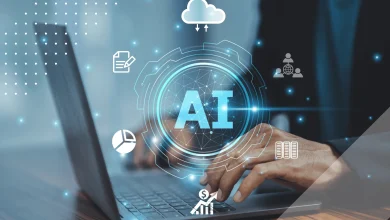
Anyone who has sat on a delayed train because of “signal failures” or swerved to avoid a pothole on their morning commute knows the irritation of aging infrastructure. What feel like everyday inconveniences are in fact symptoms of transport, energy and water systems under growing strain.
The reality is that much of UK infrastructure was designed in the 19th or 20th century, and now it faces 21st century pressures. Between heavier passenger numbers, the rapid transition to renewable energy and increasingly extreme weather, systems that once felt solid are showing their age in ways that affect daily life.
Why it matters
When infrastructure falters, it upends more than daily routines. Train delays have cost commuters more than 250 years of lost time in the last decade. Energy network failures can leave thousands without power. Even seemingly minor issues, like water main leaks, waste over a trillion litres annually and strain already stretched utilities. These failures carry financial, environmental and safety consequences, and the pressure is only mounting.
Climate extremes are hitting earlier and harder than predicted. The opening day of Wimbledon 2025 was the tournament’s hottest on record. Meanwhile, parts of southern England saw Victorian-era rail embankments crumble after prolonged dry weather – a vivid reminder of what happens when infrastructure built for one climate is exposed to another.
At the same time, studies from the US and Asia show entire cities slowly sinking, due to groundwater extraction and subsidence. For the UK’s low-lying coastal regions and urban centres, these stories are not distant warnings. They are lessons we would be unwise to ignore.
The cost of business as usual
The traditional approach to infrastructure has been largely reactive, we look to fix things when they break. But waiting until roads crack, cables leak or embankments collapse is a false economy. Emergency repairs cost many times more than preventative action, not to mention the disruption and safety risks that follow.
Manual inspections which include sending engineers into tunnels, up transmission towers or along remote tracks, are also costly, slow and can be dangerous. In the face of rising demand, tighter budgets and climate uncertainty, this patch-and-repair model is no longer fit for purpose.
A smarter way forward
Artificial intelligence offers a practical alternative. By processing vast amounts of geospatial data, from drone surveys and satellite imagery to underground sensors, AI can spot the early warning signs of failure that the human eye might miss. Instead of inspecting every bridge or cable on a fixed schedule, authorities can prioritise the assets most at risk.
This isn’t a futuristic concept. AI-driven geospatial platforms can save money and reduce risk. National Highways UK used this approach to identify and repair ageing concrete roads, cutting costs by millions in a single year.
AI doesn’t replace human expertise, it augments it. Engineers still make the decisions, but they do so with clearer, data-backed insights. That means faster interventions, fewer unnecessary repairs, and assets that last longer.
Building resilience into old systems
The real opportunity is not only in managing new mega-projects, but in extending the safe life of what we already have. Britain’s infrastructure is, in many ways, a patchwork of history: Victorian railways, mid-20th-century electricity cables, water pipes laid generations ago. Replacing it all is neither realistic nor affordable. But modernising it through smarter monitoring and predictive maintenance is achievable.
Consider energy infrastructure. Some underground electricity cables installed in the 1950s are now leaking oil into the ground, exposing both environmental and reliability risks. With AI analysis of geospatial inspection data, utilities could detect these weak points earlier and plan targeted replacements, avoiding both ecological damage and costly outages.
Or take rail – rather than waiting for embankments to fail, operators can use AI to monitor soil stability, moisture levels and micro-fractures in almost real time. This allows for timely reinforcement before passengers ever notice a delay.
The bigger picture: climate, safety and competitiveness
The resilience of our infrastructure underpins the UK’s competitiveness, attractiveness to investment and ability to meet net zero goals. Cities that cannot withstand heatwaves, flooding or subsidence risk losing businesses and people to better-prepared regions.
These threats are often invisible until too late. Infrastructure damage is frequently silent, until a heatwave buckles tracks or a flood cuts power. Proactive monitoring powered by AI and geospatial intelligence is how we give ourselves visibility before crises unfold.
From opportunity to necessity
The UK is a global leader in AI research. It is also a country with some of the world’s most complex legacy infrastructure. Bringing those two realities together is not optional; it is the only way to ensure our systems keep pace with modern demands.
This means government, regulators and operators need to embrace data-led approaches as a standard. It also means investing in platforms that make insights accessible not only to data scientists, but to every engineer, surveyor and decision-maker. Democratising this intelligence ensures maintenance is not bottlenecked at the top, but embedded across the system.
A closing thought
Infrastructure resilience doesn’t have to mean endless disruption or spiralling costs. With the right use of AI and geospatial intelligence, we can shift from firefighting problems to preventing them. That means smoother commutes, stronger utilities, and safer cities.
The UK’s future won’t be secured by ribbon-cuttings at new mega-projects, but by the quieter, smarter work of modernising the infrastructure we already rely on every day. AI gives us the tools, what’s left is the choice – will we apply them to strengthen the systems we depend on, or keep papering over the cracks?



